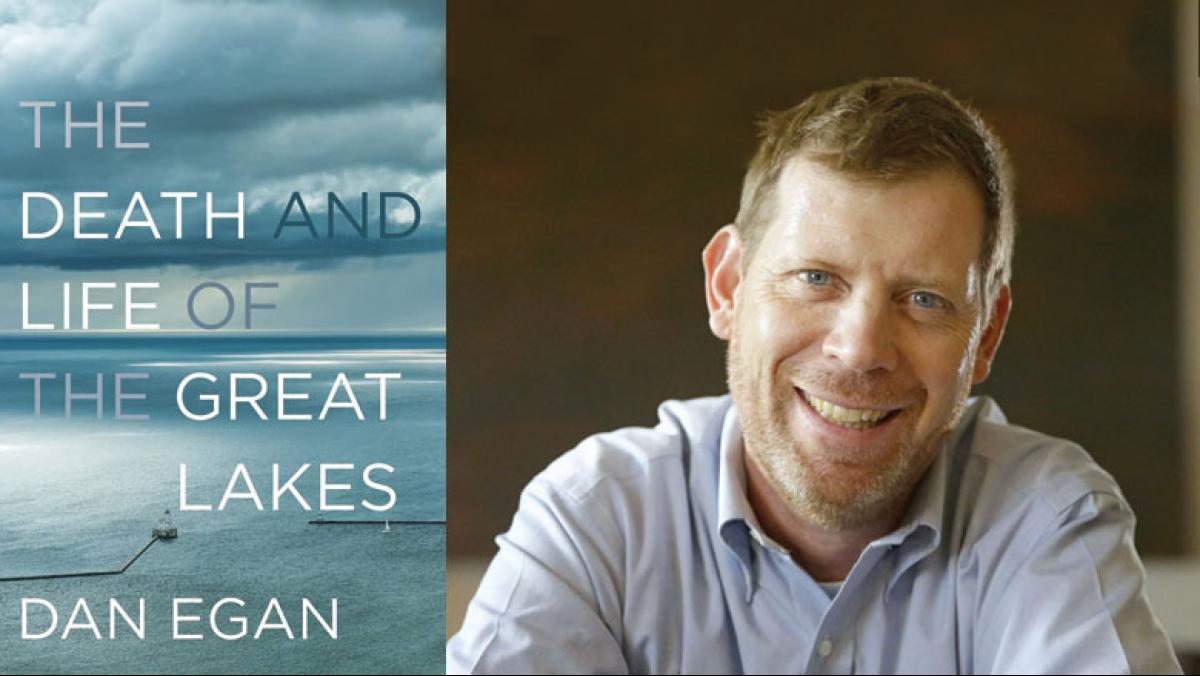Dan Egan’s The Death and Life of the Great Lakes is a new and important addition to contemporary books that tell the complex story of the one of the world’s most important freshwater ecosystems. An award-winning reporter at the Milwaukee Journal Sentinel, Egan has written about environmental conditions in the region for fifteen years. His well-researched Great Lakes series of articles have consistently probed the layered factors that drive losses in water quality and habitat.
Egan’s book reveals what is happening below the surface, which is one of the least visible and most ecologically significant sagas of the Great Lakes. He charts the human actions that have altered the ecological integrity of the lakes, from the construction of the Erie Canal to the expansion of the St. Lawrence Seaway—what Egan calls the opening of the “front door” to generations of invasive and exotic species. Egan describes how invasions and intentional introductions of species such as the Pacific salmon (chinook and coho) have disrupted and sometimes destroyed natural food webs, taking lake trout and other native species to the brink of collapse.
Because Egan tells the story of the Great Lakes as a journalist, he can convey fairly complex elements in ways that are still accessible to a non-expert reader. Making the connection between hydrology and broader environmental conditions, Egan takes on the complicated relationship between lake levels, dredging, geology, and the cumulative impacts of historic management decisions. Through interviews with many of the key players behind actions that have shaped the current (and future) state of the lakes, Egan reminds us that humans can both hurt and help this living system, one that spans 95,000 square miles and embraces 6 quadrillion gallons of water.
Egan takes the reader through the ways in which ocean-going and inter-lake shipping bring ballast-water hitchhikers—zebra and quagga mussels, spiny waterfleas, round gobies, and hundreds of others—into the lakes. The book also examines potential “back door” invasions through the Mississippi watershed via the Chicago Sanitary canal, and just how tenuous the current strategy is to keep destructive Asian carp from reaching the Great Lakes.
Any thorough book on Great Lakes environmental conditions would be incomplete without a discussion of algae and phosphorus pollution. Egan’s investigation of the 2014 Lake Erie crisis unravels the many factors leading to the toxic Mycrocystis algae that in turn triggered the August shutdown of Toledo’s drinking water supply. On the banks of Lake Erie just east of Toledo, Ohio, Egan describes seeing a beach “smothered in sludge so thick it killed the two-foot waves rolling in from the north before they could hit the shore.” The thick sludge wasn’t the potentially deadly Microcystis that caused the Toledo shutdown. But Egan notes that this blue-green algae that looked like “rotten creamed spinach” was “yet another symptom of a lake that has been knocked dangerously far out of balance.”
As a passionate champion of the Great Lakes, I have a bookshelf filled with Great Lakes books. Dan Egan’s is among the best of them. In his closing chapter, as Egan considers what it would take to advance “a Great Lakes revival,” he harkens back to the wisdom of Aldo Leopold: “A thing is right when it tends to promote the integrity, beauty, and stability of the biotic community. It is wrong when it tends otherwise.”
I agree with Egan when he observes, “Perhaps that’s as good a place as any to start.”




